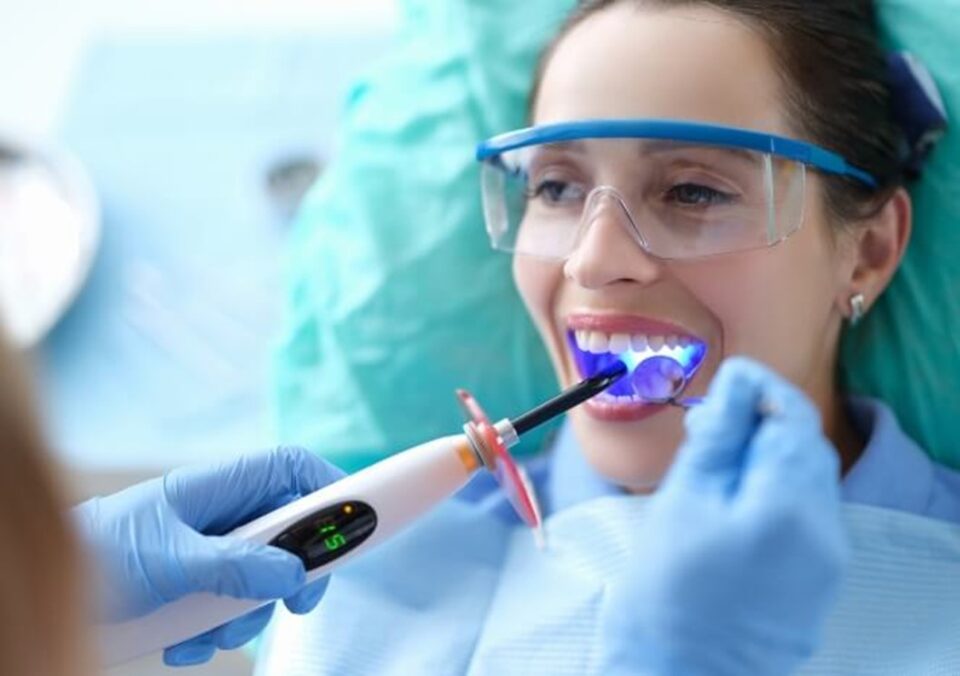Dental Bonding
Discover Dental Bonding in Scottsdale & Paradise Valley, AZ
For our clients in Scottsdale & Paradise Valley, AZ, S&L Dental proudly offers dental bonding tailored to restore and enhance your smile. Have you ever found yourself hiding your smile because of chips, cracks, or discoloration in your teeth? Whether it’s a chipped tooth from an adventure gone awry or years of coffee drinking that have left a stained appearance, dental bonding can restore the brilliance of your smile with an affordable and efficient cosmetic solution.
What Is Dental Bonding?
Dental bonding, also referred to as composite bonding, is a cosmetic dental procedure used to improve the appearance of your teeth. The process involves applying a tooth-colored resin material to the surface of the tooth and then hardening it with a special light. This material “bonds” with the tooth, hence the name to cover imperfections.
Dental bonding is suitable for patients looking for a convenient and less invasive method to correct imperfections in their teeth. It’s ideal for individuals looking to correct the following:

- Repairing Chipped or Cracked Teeth – Dental bonding can effectively restore the shape and function of teeth that have minor chips or cracks.
- Closing Gaps Between Teeth – Bonding material can be used to fill in small spaces or gaps between teeth, providing a more uniform and aesthetically pleasing smile.
- Fixing Discolored Teeth – Teeth that are stained or discolored can be treated with dental bonding to improve their color and appearance.
- Covering Exposed Tooth Roots – Bonding material can be used to protect and cover exposed tooth roots caused by gum recession, reducing sensitivity and improving aesthetics.
- Changing the Shape of Teeth – Dental bonding can be used to reshape teeth that are misaligned, uneven, or have irregular contours, helping to create a more harmonious smile.
Dental Bonding vs Veneers: What’s the Difference?
While both dental bonding and veneers aim to improve your smile, they differ in method, materials, application, durability, and cost. Choosing between dental bonding and veneers depends on the extent of tooth correction needed, your budget, desired longevity, and aesthetic goals. Veneers generally offer a more transformative and longer-lasting result but at a higher cost and with more tooth enamel removal. Dental bonding may be preferred for minor corrections, as it has a lower cost and is a less invasive procedure. Here’s a guide to help you understand the difference and make the best decision for your situation:
- Dental Bonding:
- Method & Material – Bonding involves applying a tooth-colored composite resin to the tooth to fix chips, cracks, gaps, or discoloration. The dentist shapes and polishes the resin to blend with the surrounding teeth.
- Application – Completed in one visit and does not require removing much of the tooth enamel.
- Durability – How long does dental bonding last? Generally, dental bonding can last anywhere from 3 to 10 years before needing a touch-up or replacement. Its longevity largely depends on your oral hygiene practices and the amount of bonding applied.
- Cost – It is much less expensive than veneers. This makes it a cost-effective option for patients on a budget.
- Veneers:
- Method & Material – Veneers are thin shells made of porcelain that are custom-made to cover the front surface of the teeth.
- Application – Applying veneers usually involves removing a small amount of enamel from the tooth to accommodate the shell, making it a more invasive procedure than bonding. A mold of the teeth is taken, which is then sent to a dental lab where the custom veneers are made. Patients might get temporary veneers until their permanent ones are ready.
- Durability – Porcelain veneers are very durable and can last 10 to 20 years or more with proper care, making them a more permanent solution.
- Cost – Veneers are more expensive than bonding. On average, the price for porcelain veneers ranges from $925 to $2,500 per tooth.
The Procedure: How Does Dental Bonding Work?

Our procedure for composite bonding at S&L Dental is straightforward and quick. It begins with selecting a resin shade that matches your teeth. Then, the surface of the tooth is roughened, and a conditioning liquid is applied to help the bonding material adhere. The tooth-colored resin is then applied, molded, and smoothed to the desired shape. A UV light or laser hardens the material, which is then trimmed, shaped, and polished to match the sheen of the rest of the tooth’s surface. This procedure is simple and comes with a plethora of benefits, including:
- It’s an affordable solution compared to other cosmetic dental procedures.
- The process is minimally invasive, preserving your natural teeth.
- Our patients appreciate the convenience of a treatment that’s often completed in just one visit to our office.
- It’s an all-in-one solution for various cosmetic dental issues.
- Bonding provides a durable and long-lasting smile enhancement, with the results standing strong for how long does dental bonding last? On average, expect 3-10 years with proper care.
- Plus, the material is notably stain-resistant, allowing your improved smile to remain bright.
Contact Us
At S&L Dental in Scottsdale & Paradise Valley, AZ, patient satisfaction is our passion. Whether you’re interested in understanding more about what is dental bonding or ready to book your appointment, our team is here to help. Experience the simplicity and effectiveness of dental bonding for yourself and share your smile with the world confidently. Contact us today!
Contact Us
We Welcome Patients of All Ages for Premium Dental Care!
